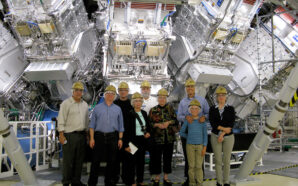Suzanne Potter
California News Service
SACRAMENTO, Calif. — Almost two-thirds of workers in California don’t have a bachelor’s degree – but only 37 percent of them have a “good job,” according to a new report.
Researchers from the Georgetown University Center on Education and the Workforce teamed up with JP Morgan Chase to study the kinds of jobs that help expand a solid middle class – defined as jobs that start at $35,000 a year, with a median salary of $55,000. Report co-author Neil Ridley, state initiative director with Georgetown, said since 1991, 34 states – including California – have added good jobs for those without bachelors’ degrees.
“Good jobs for workers without a bachelor’s degree have increasingly gone to workers with more than a high school education,” Ridley said; “so, they’ve recently gone to workers with an associate’s degree, especially.”
The study also found California lost 424,000 good manufacturing jobs since 1991, but made up more than that in skilled services industries, such as healthcare and financial services. It also showed the capacity to expand the middle class depended on each state’s ability to match the skills of young people entering the workforce with the increasingly high-tech needs of industry.
Kathy Booth is a senior research associate with WestEd, an education policy nonprofit. She said it’s no longer enough to work hard and be “good with your hands” – now, everyone needs to be tech savvy.
“Now all of that work happens through computer programs,” Booth said. “And so, you can’t have somebody who’s just good with a hammer or good with a sander. They actually have to be able to program a computer that’s cutting complicated shapes in a variety of materials. So, even things that we think of as ‘blue collar jobs’ really require that people have a more advanced education.”
Chauncy Lennon, head of workforce initiatives at the financial firm JP Morgan Chase, said high schools should steer kids toward in-demand, high-paying fields at an early age.
“Students could begin to develop the skills they need starting in ninth grade and could graduate from high school having done a program of study linked to those skills,” Lennon said. “And [they could] understand what pathways exist, whether that’s right to the labor market or to some kind of post-secondary option at a community college or other kind of training provider.”
California has been pouring hundreds of millions of dollars into apprenticeship programs, a learn-and-earn strategy designed to keep students from dropping out of community college.
Photo Caption: A new report shows California’s manufacturing sector is increasingly dependent on computers, so even many blue-collar jobs now require tech skills.






